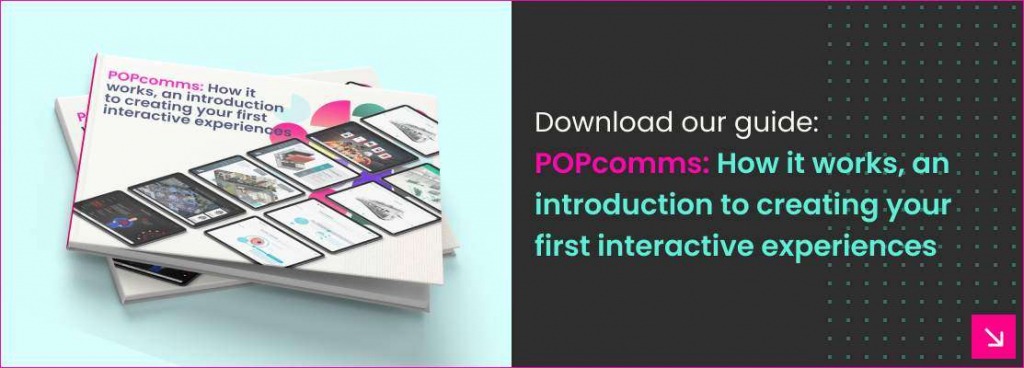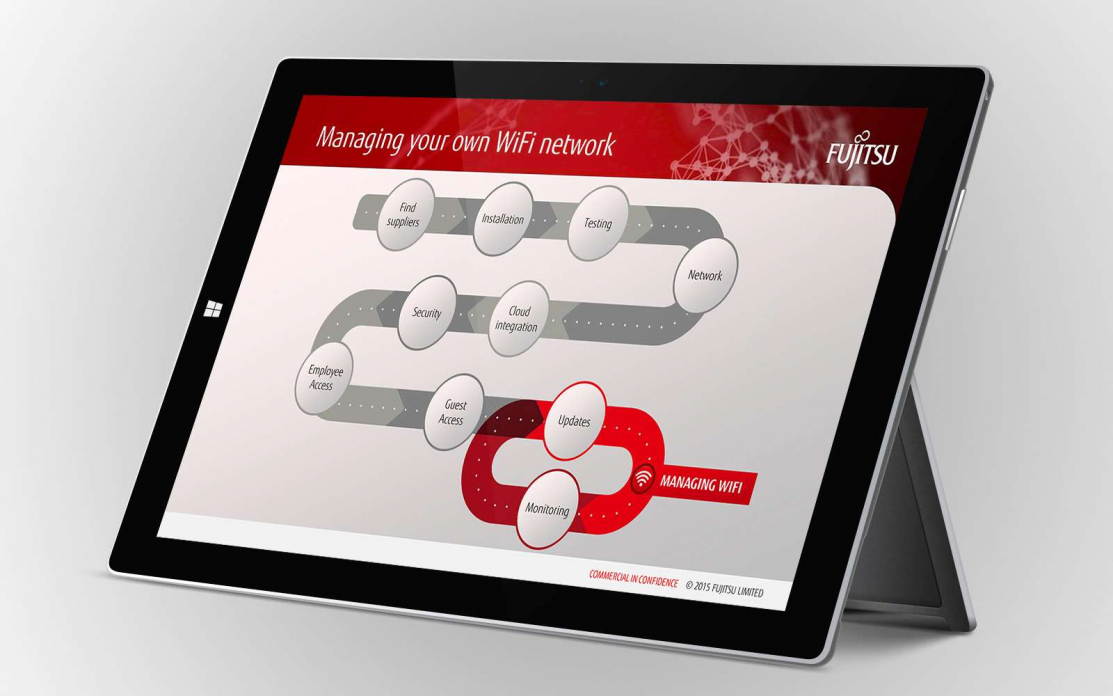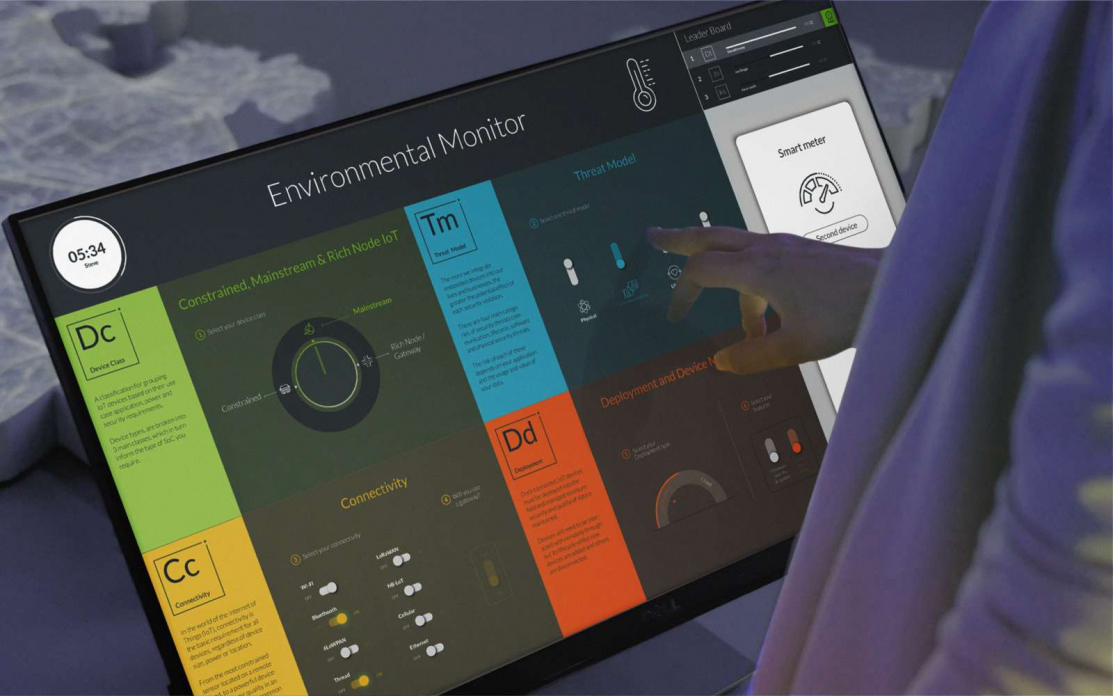If you’ve seen an interactive sales experience in action, you’ll understand how powerful they are – and you may be concerned that creating one will be a time-consuming and complex process.
Whether that’s the case or not depends a lot on who is developing the experience for you. If they have a tried-and-tested process to get you from the initial concept to working sales experience then it should be a fairly smooth process.
The sort of factors that can impact development time are:
- Content readiness – What state is your current content in? Will this need an overhaul?
- How many stakeholders within your business need to be involved and input into the development?
- What technical integrations will you require, such as accessing your Digital Asset Management System, PIM, CRM, or BI tools?
To illustrate the steps involved and how long they take, we’ll use our 20+ years of experience in sales & marketing working with both off-the-shelf and bespoke solutions to give you a guide.
So, let’s start the stopwatch and dive in!

A Voyage of Discovery
Technology without purpose is like a car without steering – unlikely to result in a happy ending!
The success of any technology initiative (especially an interactive sales experience) is predicated on there being:
- Crystal clear objectives & priorities – knowing what success looks like and when you’ve achieved it.
- The consensus amongst everybody involved in the project AND with the end users. It’s amazing how often businesses don’t consult the end user. With a sales experience, this is your reps, and especially your audience – your buyers.
- A clear, ambitious, yet achievable roadmap for delivery and ongoing success is broken down into agile blocks of effort, and continuous feedback, testing and refinement.
The Customer Success Blueprint™ is a tried and tested 3-step program we take customers through.
1. The Discovery Phase
The discovery phase reveals the challenges of your sales team, marketing, and most importantly, your customers; inspire you in the art of the possible, and build consensus and adoption within your teams.
Strategy
The first step should always be to decide what your goals are and what success will look like. You need to know where you’re going and have a way of recognising that you’ve reached your destination.
- What are your short, medium, and long-term business goals?
- How will you measure your progress towards these goals?
- Who needs to be part of this journey – who is accountable, and who needs to be consulted and informed?
- What are your key milestones?
It’s important to be clear on all the above points right from the get-go.
Content audit
Content can be one of the biggest blockers to getting a sales experience up and running. Clearly, this is the most important part for customers as it’s the material that is shared with them which educates them on your value and services.
Ask yourself:
- Is your content up-to-date in terms of messaging and brand?
- Is your message clear and concise?
- Does your content help customers make sense of who you are, the services you provide, and, importantly, the value you provide?
- Is your content engaging and memorable?
- Is your content visually engaging, using visual storytelling to help convey important messages?
- Do you have enough content to cover all aspects of your business that customers may need to make an informed decision?
- Is your content in the correct format? Is it easily accessible by the teams that need it?
These are all important considerations to take into account. We recommend looking into any issues as soon as possible, as some may take time to resolve.
The survey
As part of the information-gathering process, surveying key people, those who will use the sales experience and input into its creation is invaluable.
It’s important to understand:
- What currently works and what doesn’t?
- What features would make their jobs easier and more efficient?
- What sales materials resonate with customers.
While this phase concentrates on gathering input from your team, it can occasionally involve speaking to customers as well. We understand that it can be hard to get customers involved but if you can this will be a real bonus.
The workshop
With the survey results in, we’d always recommend holding a workshop with the key stakeholders.
The focus should be on presenting findings from the survey and research. You should also share a high-level initial draft of your sales experience structure.
The high-level structure will outline the necessary content and the customer and user journey.
In this workshop, you want your platform provider to play the “customer in the room” – basing their proposal on what they feel will work best from your customer’s perspective and challenging you on how to personalise and visualise your story.
Who should be involved in the workshops? We’d recommend a mix of people from different roles who will all have their own perspectives on what is important in sales experience.
Include sales, marketing, product managers, IT, and digital marketing. Also, include customer success or customer service teams (if you have them), as they can be invaluable.
Building consensus
Another important reason to run surveys and workshops and invite your sales teams is to build consensus and ensure adoption.
Use this time to build consensus and buy-in internally, as it allows everyone to discuss what your dream customer sales experience should look like.
If the sales team is part of this process, they will have skin in the game, having inputted at an early stage. When it is time to roll out the sales experience to the sales team, they will already know about it. So, adoption should be a lot easier.
The roadmap
With all the above information, your provider should be able to come back to you with a project plan, key milestones, and a structure for the sales experience. We call this the Blueprint.
Within the Blueprint or project plan you should expect to see key features and functionalities prioritised by importance. The highest priority features should be released in the first version and then subsequent releases will contain other features.
This is an agile approach and means you can release fast, test and update regularly making decisions based on actual feedback and data.
The Blueprint is your roadmap to success and defines everything needed now to start developing your sales experience.
In our experience, the discovery phase typically takes four to eight weeks.

Once you reach the prototyping and testing phase, your teams will be involved to ensure that the resulting sales experience properly reflects their needs, input and ideas.
2. Onboarding
Now that you have approved your Blueprint, you can move to the onboarding phase, the really exciting bit where your ideas take life!
Onboarding comprises several distinct but interrelated stages. Generally, this takes around six to twelve weeks to complete, but that time scale can be affected by any delays affecting key components:
- Creation of any creative assets you might need.
- Connecting to and integrating with internal data sources such as your CRM, DAM, PIM, and Business Insight systems.
- Training your sales and marketing team to use and modify your experiences.
It’s important to appreciate that this part of the process is not always linear; various steps can run concurrently within that overarching timescale.
Content creation
This stage is key to your finished experience, and depending upon the availability of suitable content, it can consume a sizable part of those twelve weeks.
During this stage, you’ll decide whether or not you can re-use content or need new material that better supports your sales teams.
It’s an ideal opportunity to do a bit of content spring cleaning, reviewing and cleaning out anything old, out-of-date, or simply not working. Some providers can handle this on your behalf and do most of the heavy lifting for you, while others can’t.
You’ll already have a considerable store of content, but you may want to augment your existing content with 3D models, videos, graphic representations of your products and solutions, and much more.
In this case, that content will have to be created for you. However, if the company you’re working with is experienced, even doing this creative work can be encompassed within the onboarding timescale.
Integrations
If you want to pull content from your DAMs and PIMs into your sales experience and integrate it with your CRM, you should factor this into your timings.
We recommend hooking up your IT team with your provider’s development team early. From experience, this can be a slow process.
Development
How complex and long this stage is depends on the platform and technology your provider uses.
If they are building a bespoke sales experience platform then you could easily be looking at 6 to 9 months of development time.
If they have or use a dedicated sales experience or digital experiences platform, this part may only take a few weeks, maximum. This development stage will run in parallel with the content creation process.
Prototyping and testing
Even if your sales experience is constructed on a tried and tested platform, you still need to go through a thorough testing and prototyping phase.
While your provider may use the same underlying functionality for every customer, the exact specifications will be unique to you and therefore need to be tested and approved.
You’ll also have your own unique story to tell, so this narrative flow needs to be stress tested to ensure it works with every type of customer interaction.
Additionally, your key team members should ensure that any functionality they need is present and that their ideas, if agreed upon during discovery and scoping, have been incorporated.
Training and rollout
This is the climax of the onboarding phase, as your sales experience is rolled out and key staff are trained on how to get the very best from it.
We usually suggest a phased rollout. Choose a select number of sales reps to test the experience first in the field to iron out any final issues and then roll out to the wider team.
This approach ensures the whole sales team can hit the ground running and not worry about things breaking or not being quite right.
3. Customer Success
The final stage is ensuring a customer’s ongoing success.
- How will they work with you to ensure that your platform is constantly improving and keeping you ahead of the competition.
- Is there constant R&D in the business, are they checking in with you regularly and advising on optimising your experiences.
- Selling you a platform is one thing ensuring your ongoing success is another.
Our advice
As we have said: despite the several steps required, we would expect the development of an interactive sales experience to take anywhere between six and twelve weeks to complete.
This time frame is entirely feasible when there is a tried and tested process to rely on. It also helps if the company creating your experience can handle all aspects of the job, including content creation.
If that’s not the case, and external consultants are required, timescales can slip, simply because you have to ensure that different contributors are available and focussed at the right time.
For instance, a delay in delivering content would seriously impact your rollout and onboarding goals.
Time is on your side
Despite the complexity of interactive sales experiences, creating and implementing them shouldn’t be a gargantuan task. This will likely be a topic of conversation with whoever you choose to develop your sales tool.
Ask them about their process, as well as their timescales. Find out if they can handle all stages necessary to develop an interactive sales tool, including content creation, or whether the work will have to be outsourced.
If you would like to know more about our process and approach to creating a unique, powerful sales experience, we’re always happy to arrange a demonstration and chat to explain exactly how we do what we do.

Related Posts

Case Study: How POP Creates Interactive Presentations Your Entire Team Can Use
Read

Why Your Sales Presentation Can Make or Break Your Business
Read

Interactive Presentations: Why Are Customer Trends and Challenges So Important?
Read

How to Make Your Presentation Stand Out With an Interactive Touchscreen
Read